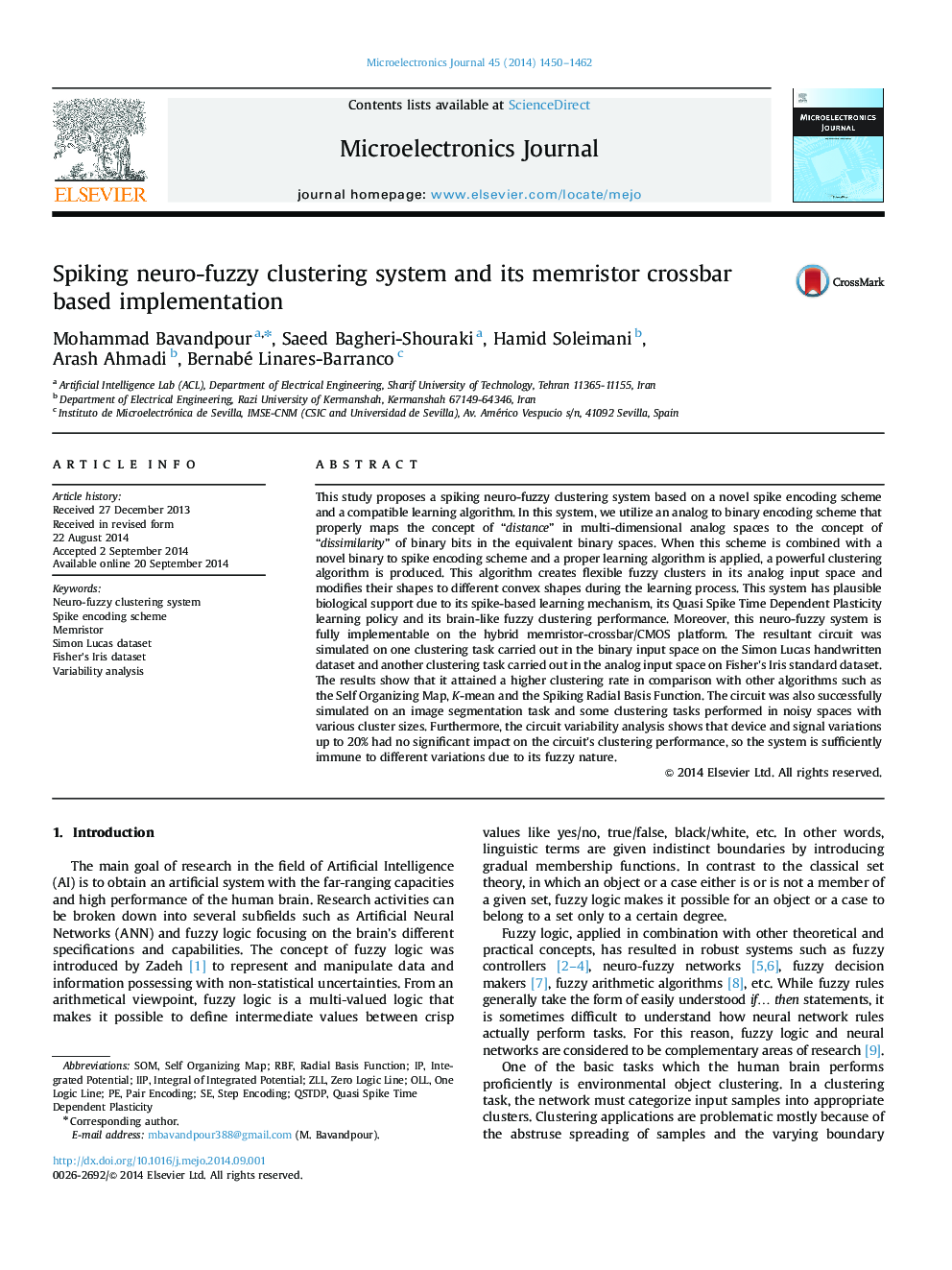| Article ID | Journal | Published Year | Pages | File Type |
|---|---|---|---|---|
| 10364154 | Microelectronics Journal | 2014 | 13 Pages |
Abstract
This study proposes a spiking neuro-fuzzy clustering system based on a novel spike encoding scheme and a compatible learning algorithm. In this system, we utilize an analog to binary encoding scheme that properly maps the concept of “distance” in multi-dimensional analog spaces to the concept of “dissimilarity” of binary bits in the equivalent binary spaces. When this scheme is combined with a novel binary to spike encoding scheme and a proper learning algorithm is applied, a powerful clustering algorithm is produced. This algorithm creates flexible fuzzy clusters in its analog input space and modifies their shapes to different convex shapes during the learning process. This system has plausible biological support due to its spike-based learning mechanism, its Quasi Spike Time Dependent Plasticity learning policy and its brain-like fuzzy clustering performance. Moreover, this neuro-fuzzy system is fully implementable on the hybrid memristor-crossbar/CMOS platform. The resultant circuit was simulated on one clustering task carried out in the binary input space on the Simon Lucas handwritten dataset and another clustering task carried out in the analog input space on Fisher׳s Iris standard dataset. The results show that it attained a higher clustering rate in comparison with other algorithms such as the Self Organizing Map, K-mean and the Spiking Radial Basis Function. The circuit was also successfully simulated on an image segmentation task and some clustering tasks performed in noisy spaces with various cluster sizes. Furthermore, the circuit variability analysis shows that device and signal variations up to 20% had no significant impact on the circuit׳s clustering performance, so the system is sufficiently immune to different variations due to its fuzzy nature.
Related Topics
Physical Sciences and Engineering
Computer Science
Hardware and Architecture
Authors
Mohammad Bavandpour, Saeed Bagheri-Shouraki, Hamid Soleimani, Arash Ahmadi, Bernabé Linares-Barranco,
